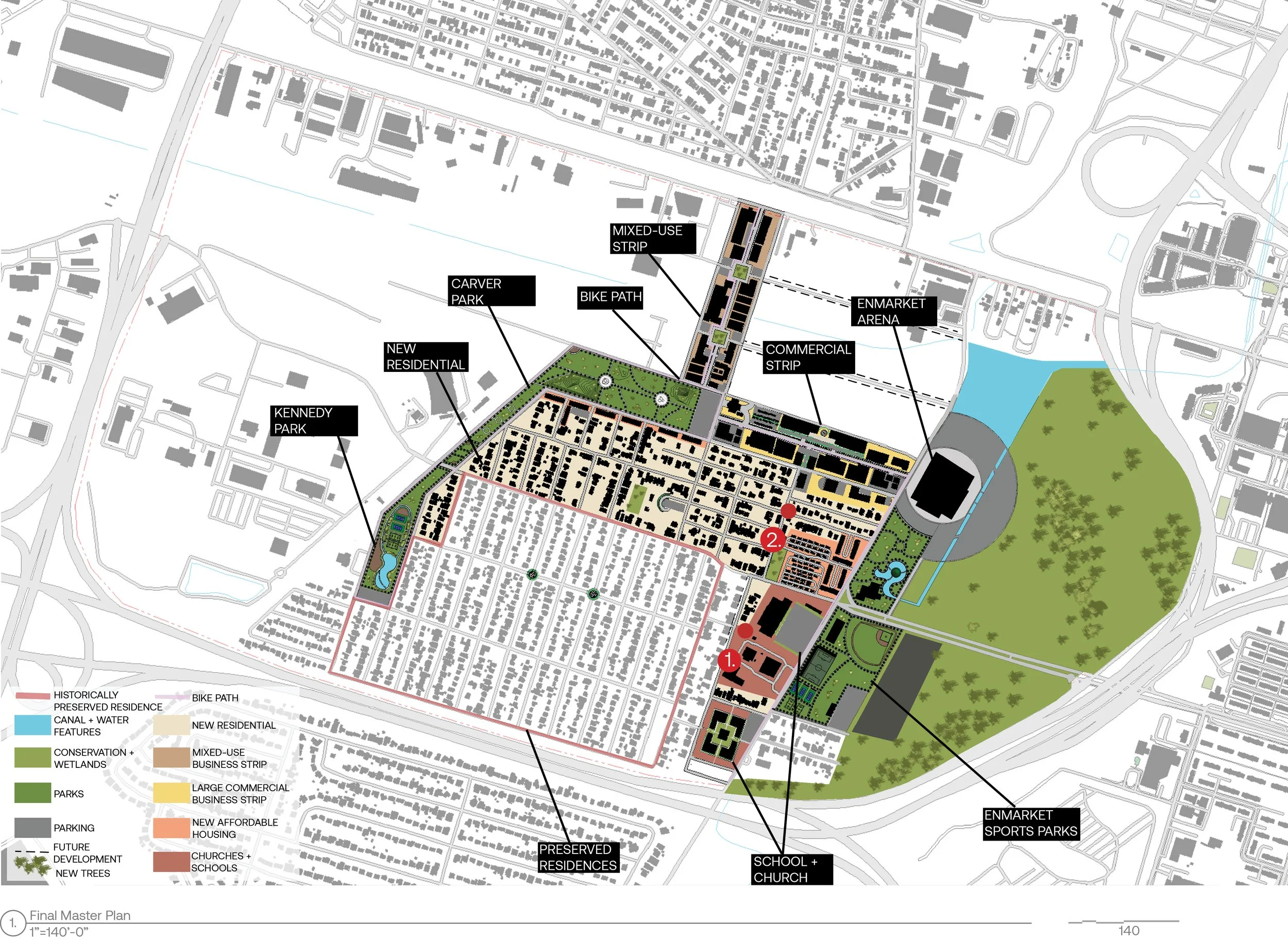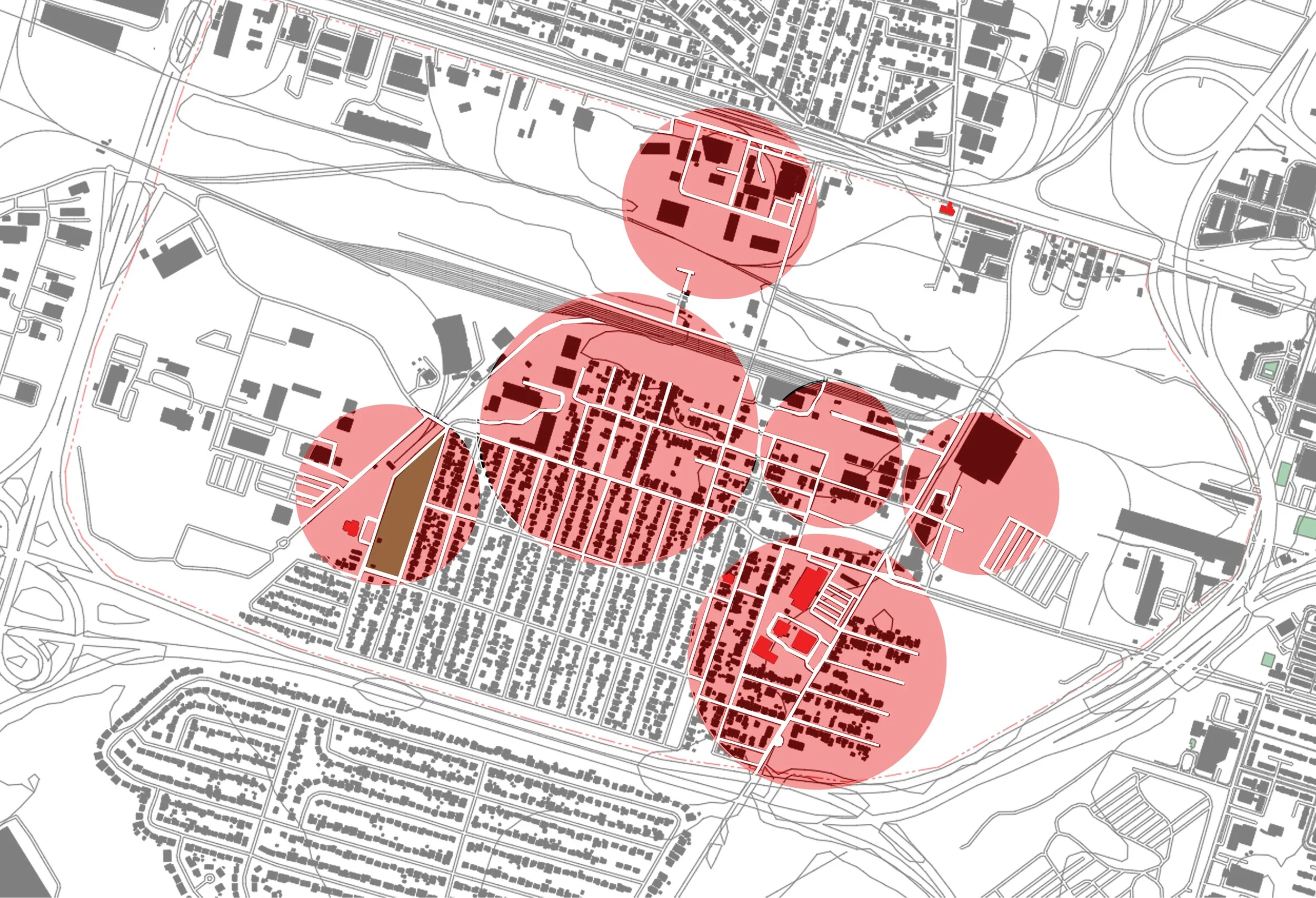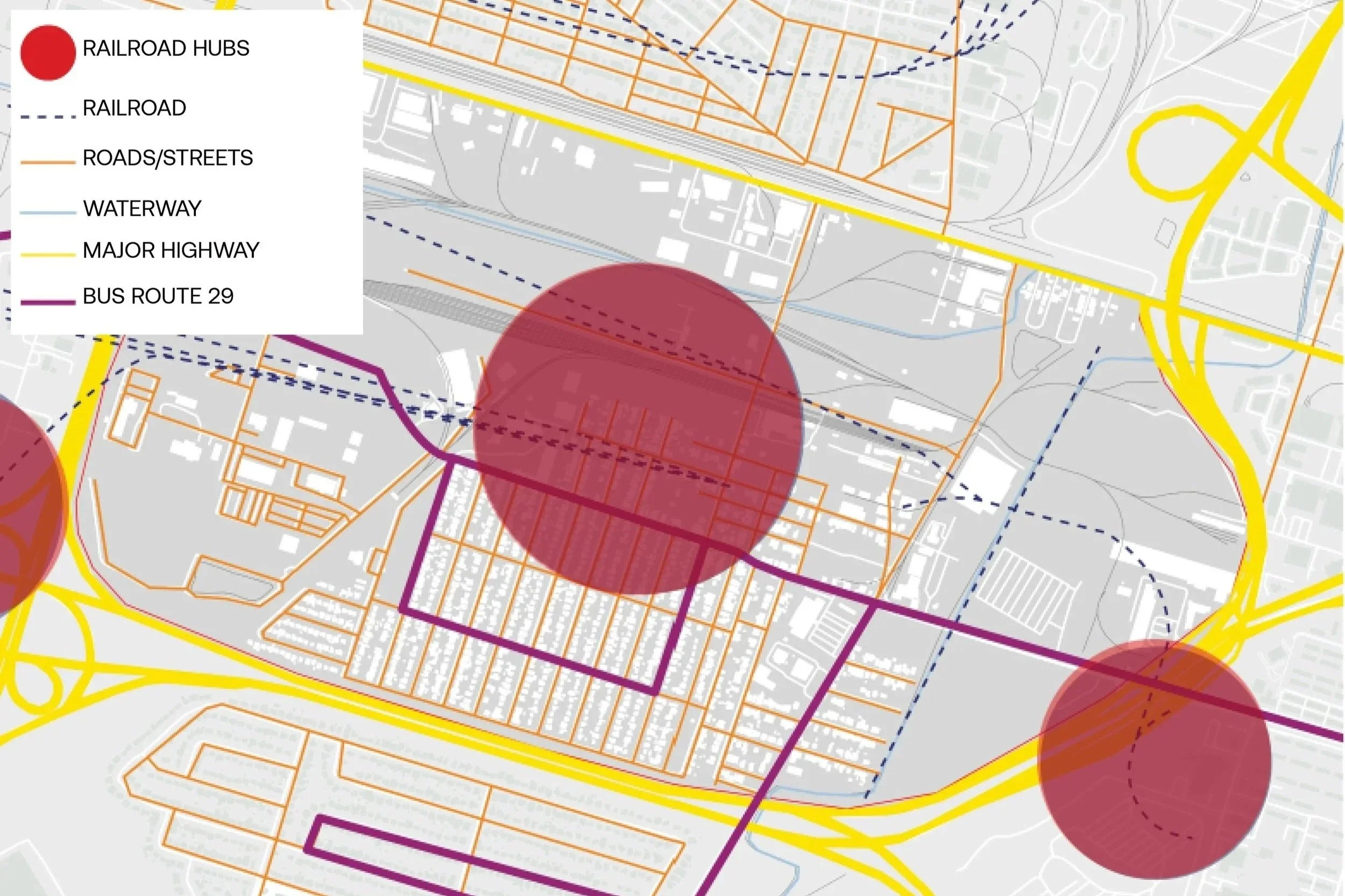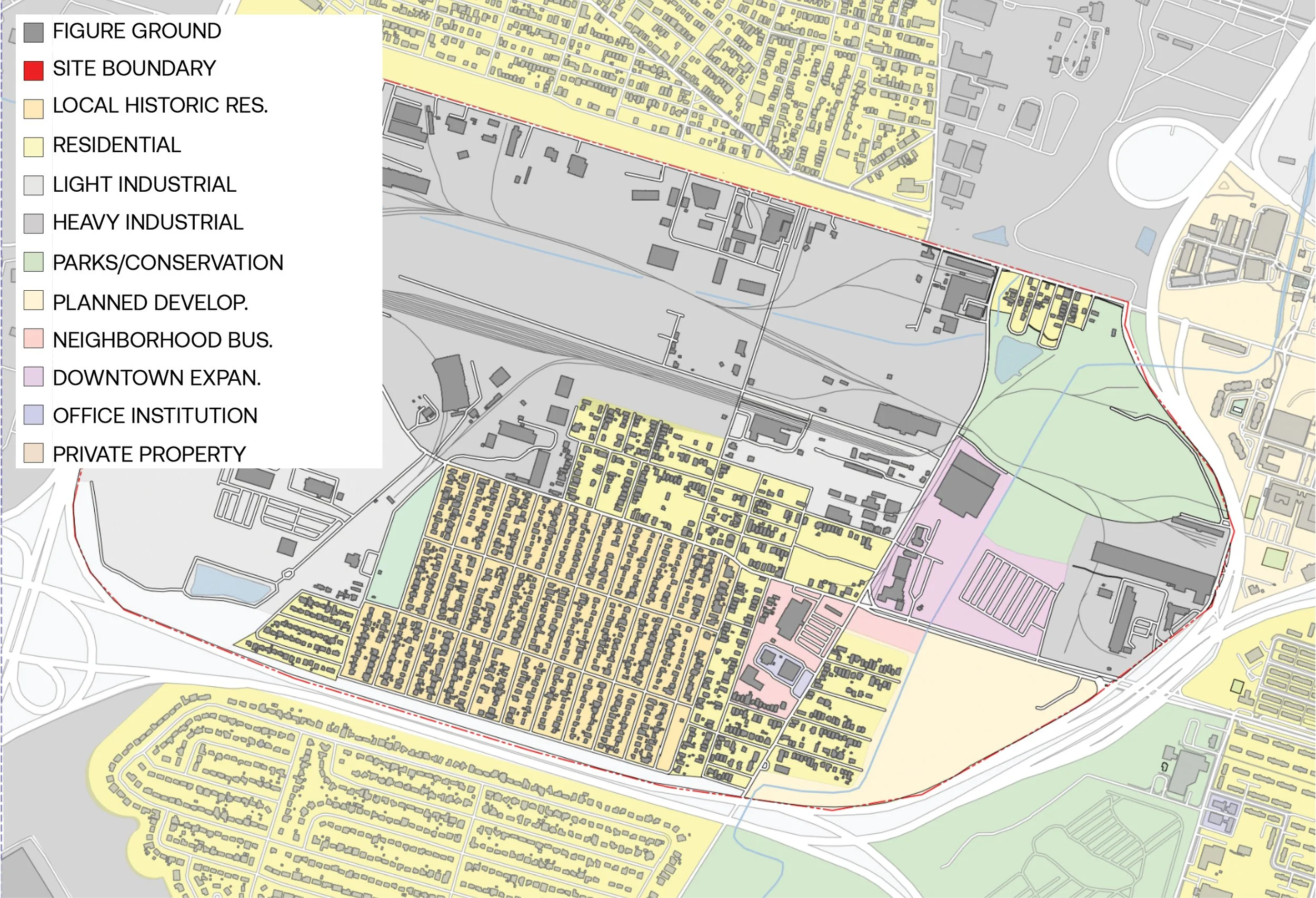Project 4- Section III

✦ Project Overview: Section III
Section III is a community-focused urban planning project developed during my first-year studio at SCAD. Set in a historically underserved neighborhood west of Savannah, the project aimed to uplift existing residents through thoughtful, inclusive design. The central goal was to support long-term growth and integration with the broader city while preserving the cultural and historical identity of the area.
Grounded in principles of equity and resilience, the project approached urban revitalization as a collaborative and context-sensitive process. It emphasized the importance of listening to community needs and designing environments that promote dignity, access, and opportunity. From mobility to economics to cultural preservation, Section III explored how design can become a catalyst for meaningful change at the neighborhood scale.
✦ Design Interventions & Strategy
The planning and design framework for Section III was informed by in-depth analysis of pedestrian movement, traffic flow, business activity, and demographic data. From this, a series of targeted interventions were developed to address both immediate community needs and long-term urban resilience. These included:
Mixed-use infill development to promote affordable housing and small business growth.
Transit and pedestrian connectivity improvements, such as expanded sidewalks, protected bike lanes, and safer intersections, to increase access and mobility.
Community green spaces and urban agriculture zones that serve as gathering points and support food security and environmental health.
Adaptive reuse of historic structures, transforming underutilized buildings into education centers, co-working spaces, and cultural hubs.
Integrated stormwater management, using bioswales and permeable surfaces within public spaces to mitigate flooding and enhance ecological performance.
Together, these interventions created a vision for revitalization that balances social, environmental, and economic goals — reimagining the neighborhood not through displacement, but through empowerment and connectivity.




